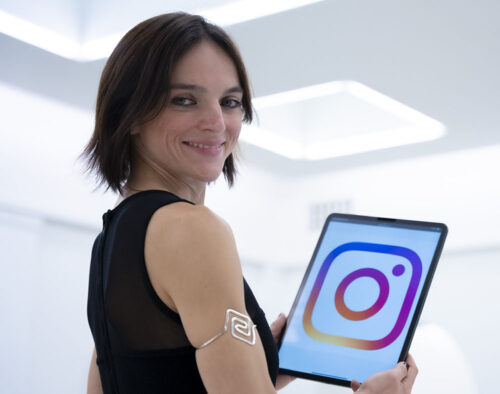So, Victoria, you are rolling out a new campaign addressing today’s topic: Instagram. What triggered you to actively use Instagram as a tool in international arbitration and especially for myArbitration?
As you know, one of the biggest aims of myArbitration is the promotion of inclusivity in the community. And simply put, flying out to six conferences a year is not a reality for most people, especially students who are eager to know more about arbitration. This is where the doors usually close until you get to see a page-long description of what you missed on LinkedIn a day later. However, Instagram is a quick and nifty way to connect that doesn’t require anything but a phone, some time, and a bit of good will.
Totally understandable. Even as a practitioner it is not possible to attend all of the events for numerous reasons. Can you tell us more what myArbitration wants to achieve?
What myArbitration seeks to achieve on Instagram is first of all, bring those interested in the world of international arbitration high-quality versatile content, point them to the already existing and up and coming initiatives, as well as connect them among themselves and foster an alternative platform for virtual networking.
How can I imagine this connection?
There are multiple aspects to it.
The myArbitration crew will be flying out to conferences and bringing you the scoop. Our cameras will cover everything – from interviews with panelists, and highlights of the academic activities all the way to social events. Everything we see, our followers will get to see as well. We’ve recently embarked on not one but two events the coverage of which has been well documented on Instagram with great success – ICCA Congress in Edinburgh and Istanbul Arbitration Week.
Everyone who missed either of these events should definitely look into it! The interactive nature of Instagram allowed us to be in touch with the followers in real time and find out what they wanted to see more of. This is sure to continue for the future events as well.
Another aspect to it is providing a space, not only for virtual networking, but also highlighting the fresh and new content scattered around different sources, as well as other initiatives in the community worth checking out.
If I understand you correctly, the general idea is that myArbitration covers the conferences and the followers can participate virtually and engage with the myArbitration team via social media?
Only in part. There is much more coming up. From updates and calls for contributions for future myArbitration projects to different collaborations, advice, inspiration and so on. As the myArbitration universe expands, there is always room to expand the Instagram coverage as well.
Of course, that does not mean that the regular myArbitration content is going anywhere.
For those of the readers who do not have Instagram or who have not yet followed your professional Instagram account, what content can they expect to see there?
The account has always been and will certainly continue to be a tapestry. Threaded through are initiative updates, behind the scenes content from the newest myArbitration episodes, episode highlights, scoops & recaps from different conferences and events, along with calls for action and contributions for further projects – such as the documentary currently in production. Last but certainly not least, the account often features other noteworthy initiatives, friends and colleagues.
Instagram is a quick and nifty way to connect that doesn’t require anything but a phone, some time, and a bit of good will
What is it that distinguishes Instagram from LinkedIn when covering arbitration events?
In contrast to the common misconception, Instagram does not only allow for the transmission of pretty pictures – it encourages immediacy. Lives, stories, notes, polls, question stickers and so much more are all features that let you get the message across RIGHT NOW.
You don’t need to curate and polish a perfect LinkedIn post or plan a trip to a conference you may not be able to fit into your schedule, or even afford in order to network or engage with your professional contacts (yet known or unknown) – you can address those who are interested in what you have to say directly and without much pomp!
This is especially true for the youngest among us for whom Instagram is a natural habitat. It’s a great way to transition them into the community, and allow them easy access to genuine advice and inspiration right from the source.
Would you agree that LinkedIn – generally speaking – focuses more on the substance whereas Instagram especially addresses the social part and the networking aspect?
In my view, given its versatility and the various types of content it can house and get across, it can go far beyond networking. Even when it is not the most convenient format for substance, there is no reason not to use it to steer those following into the direction of said substance. Think of it as a virtual megaphone, or one of those street spinner signs.
Social media and arbitration have recently been recurring topics. I have asked on LinkedIn using a very open question “Instagram and arbitration: Does it work?”. Only 29% answered with “yes”, 43% said “no” and 29% “Don’t see how”. Having this percentage in mind, what is your take on it? I assume you agree with the first 29%?
I believe it does work. It works for fitness gurus, politicians, artists… It connects you to those who want to hear from you, seek out your content and want to engage with it. If you look at it as such, why would it not work for the international arbitration community?
That is a very valid question indeed. But I wonder how to implement Instagram in our daily life of arbitration. Looking at you personally, for example: Do you already use Instagram for arbitration content? What kind of content do you publish on Instagram or would expect to see there?
Me – personally – I have an Instagram account for friends and colleagues (after a decade in this community these overlap quite a bit) that I accepted on that account. I do not post anything about my counsel or arbitrator work on that account.
But our professional lives – mine at least – go beyond the content of my mandates. It is education, training, experiences, teambuilding, friendships, inspiration, self-growth, adventures, challenges, conferences, initiatives, trends.
The list brings me to address moot court competition, because basically everything you just mentioned is somehow connected to it. Many moot court teams use Instagram to present their team, share memes about the competition, give insights into their year. In your opinion: does this add value to the competition or is it simply an additional possibility to add another layer of fun?
Both, for sure.
I’d say that the star value of team Instagram accounts became especially glaring during the pandemic. They provided a very viable alternative for in-person networking. Teams got to know one another through them, got to communicate, as well as support one another and share their achievements. Instagram allowed them to still be able to enjoy the community camaraderie without actually getting to see each other or compete face to face.
But also, getting to post niche memes that a very select group understands and engages with is an amazing bonus. It is not superficial either – it adds to the sense of a shared experience.
The interactive nature of Instagram allowed us to be in touch with the followers in real time
Do you see a certain type of people using Instagram rather than others? For example, is Instagram more for the younger generation rather than the average well-settled arbitrator?
Of course. The age difference is quite an obvious one. Especially in our community. However, even though the younger generation has either grown up with Instagram or adopted it as a staple sometime in their teenage years, the older one is very receptive to it as well. I see more and more of our colleagues join every day.
How can students/practitioners use Instagram in the context of arbitration?
The best thing about Instagram is its versatility. It offers a platform that everyone can easily tailor to their preference, style of networking, as well as the overall content they put out or simply enjoy. If you’re not much of a poster, you can still engage in what others post, you can participate in discussions on a number of topics and network with people from every nook and cranny of the globe. Not to mention that it is fairly straightforward and user-friendly. In short, when it comes to the use of Instagram by the arbitration community, the sky is the limit.
What is your expectation / what are your hopes for this initiative?
Much like with myArbitration initially, my hope for the Instagram campaign is to get people to connect and experience the oftentimes constrictive corporate culture in a whole new light – with less formality, rigidity, self-congratulations and most importantly, without geographical or other limitations.
Although we’re still in the early days of the campaign, this is already proving true. People were craving authenticity and a bit more of a personal touch in their networking pursuits and content consumption and that is exactly what Instagram allows for.
Why did you go for Instagram instead of TikTok for example? Any plans to broaden the social media presence there too?
You never know. If the arbitration community shows an affinity for it, why not. A move to TikTok would require some serious dance moves though.
Trust me: I will be the first one to follow your arbitration dance-moves. As we come to the end of our interview: Do you think that we have convinced a few of the 29% undecided and 43% disagreeing people that Instagram could and should be used in arbitration?
I sure hope so! To anyone with a shred of doubt: “don’t knock it ’til you’ve tried it” – give it a go and you’ll become just as much of a fierce Instagram-in-arbitration proponent as we are.
Thanks for Joining me Victoria!
About the Interviewer

Svenja is an attorney in Germany. She studied law at the University of Kiel and holds an LL.M. degree from Columbia Law School. Her arbitration practice concentrates on arbitration and complex commercial litigation with a particular focus on multi-jurisdictional legal actions with an emphasis on commercial questions as well as M&A and Private Equity transactions. The cases are usually subject to many different systems of law and under several institutional rules, in particular under the arbitration rules of the DIS and ICC.
She regularly speaks on panels and webinars and publishes articles in the field of international arbitration. Her passion for the changes and challenges digitalization and digital transformation mean for the legal industry led her to start the initiative “Digital Coffee Break in Arbitration”.
